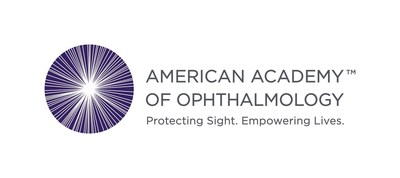

NEW ORLEANS, Nov. 11, 2017 /PRNewswire-USNewswire/ -- The American Academy of Ophthalmology today announced key milestones and clinical insights from studies powered by its clinical database. The IRIS® Registry (Intelligent Research In Sight) has amassed more than 41.2 million unique patients in its database, representing 166.2 million patient visits, covering 11 percent of the U.S. population. It is the largest clinical specialty database in the world, allowing ophthalmologists to pioneer research based on real-world clinical practice.

Launched in 2014, the IRIS Registry is the nation's first comprehensive eye disease clinical registry. The Academy developed it as part of the profession's shared goal of continual improvement in the delivery of eye care. Open to all Academy members in good standing, the IRIS Registry allows ophthalmologists to compare their patient outcomes, professional performance and care processes against other ophthalmologists across the country. A number of key insights are being presented today at AAO 2017, 121st Annual Meeting of the American Academy of Ophthalmology.
Three brands of treatment appear equally effective in patients with age-related macular degeneration
One of the most hotly debated issues in eye care in recent years has been over three similar anti-vascular endothelial growth factor (anti-VEGF) treatments for age-related macular degeneration. To find out if there are differences in their ability to protect sight, researchers reviewed records for 13,859 patients treated with a single drug type – Avastin (bevacizumab: 6,723), Lucentis (ranibizumab: 2,749), or Eylea (aflibercept: 4,387) – for one year. Patients achieved similar improvement in vision regardless of drug type. Mean number of injections were 5.9 with Avastin, 6.4 with Lucentis, and 6.2 with Eylea.
Complication related to macular degeneration treatment less common than previously reported
Previous randomized, controlled trials have shown that close to 10 percent of patients who received anti-VEGF therapy for retinal diseases experience a pressure rise inside the eye that could be damaging. To learn more, researchers conducted a review of 23,776 patients with age-related macular degeneration, diabetic macular edema, or branch or central retinal vein occlusion who received bevacizumab, ranibizumab, or aflibercept injections. The rate of clinically significant pressure rise was small, at 2.8 percent for both ranibizumab and bevacizumab. The rate was even smaller for aflibercept, at 1.9 percent, which is considered insignificant. It's unclear why aflibercept was not associated with sustained pressure rise.
Many patients with diabetic macular edema go untreated
A review of 13,410 patients shows that 60 percent received no treatment within the first year after their diagnosis of diabetic macular edema. For those who were treated, anti-VEGFs were the treatment of choice: 23.5 percent received an anti-VEGF while 13.7 percent received laser treatment and 1.8 percent received corticosteroids. Almost half of those receiving an anti-VEGF treatment had 3 or fewer injections. Data suggest future studies should investigate possible barriers preventing patients from receiving care.
Return trip to the operating room after macular surgery linked to significantly worse visual outcomes
An evaluation of patients who underwent macular surgery from 2013 to 2016 showed that about 6 percent of patients had to go back to the operating room for a second macular surgery. Patients who required another surgery experienced significantly worse visual outcomes, compared with patients who did not require a second surgery.
Promise of using the IRIS Registry to study patients with glaucoma
The IRIS Registry currently includes data on 5.4 million glaucoma patients, representing 8.6 million eyes. Data collected include disease type and severity, as well as age, sex, race, and types of surgical procedures performed. Currently there are 2 million patients with suspected primary open-angle glaucoma and 1.3 million with primary open-angle glaucoma.
"The holy grail of health care is to improve value by enhancing patient outcomes, improving the process and experience of health care, and reducing unnecessary or ineffective care," said William L. Rich III, M.D., medical director of Health Policy for the American Academy of Ophthalmology. "The IRIS Registry has proven to be a valuable tool for patients, physicians, and the health care system as a whole."
About the American Academy of Ophthalmology
The American Academy of Ophthalmology is the world's largest association of eye physicians and surgeons. A global community of 32,000 medical doctors, we protect sight and empower lives by setting the standards for ophthalmic education and advocating for our patients and the public. We innovate to advance our profession and to ensure the delivery of the highest-quality eye care. Our EyeSmart® program provides the public with the most trusted information about eye health. For more information, visit aao.org.
SOURCE American Academy of Ophthalmology